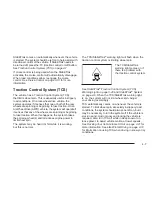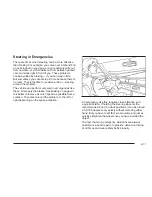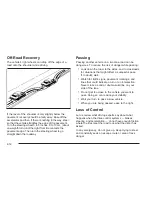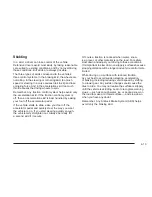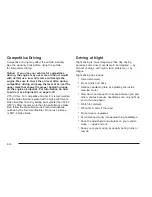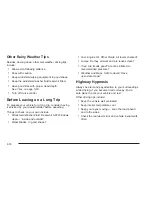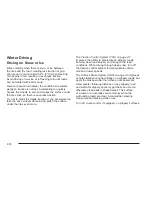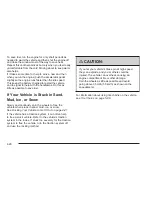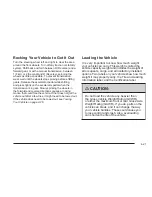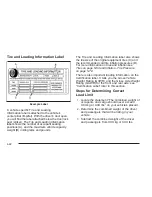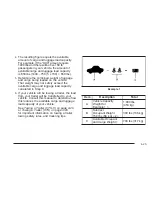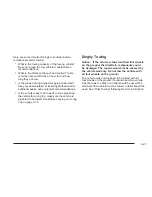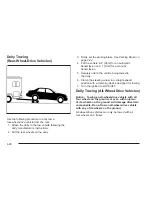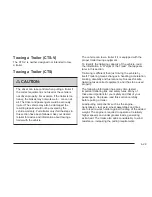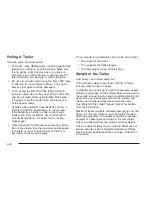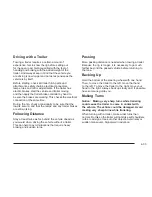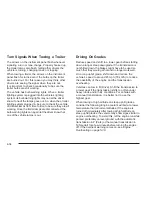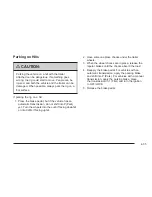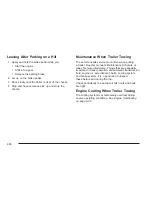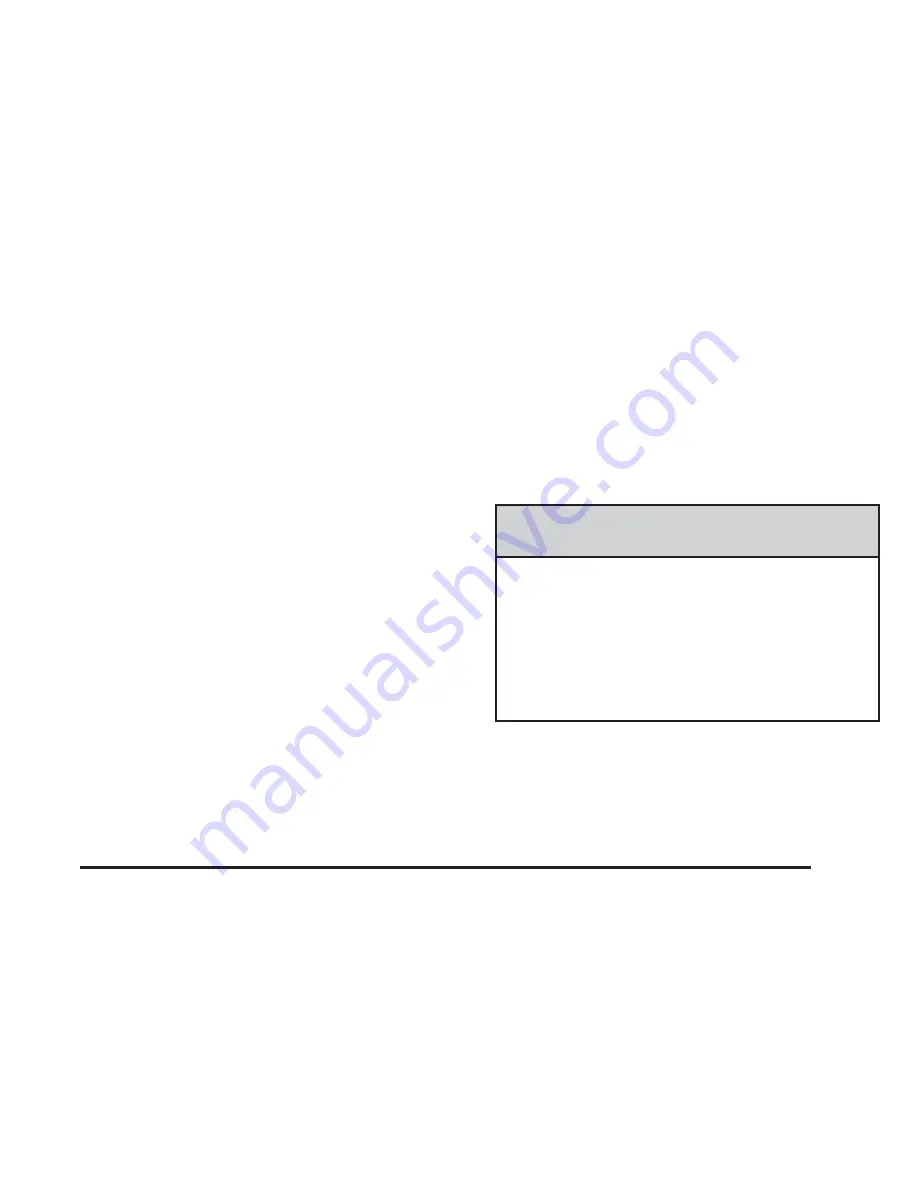
Rocking Your Vehicle to Get It Out
Turn the steering wheel left and right to clear the area
around the front wheels. Turn off any traction or stability
system. Shift back and forth between R (Reverse) and a
forward gear, or with a manual transmission, between
1 (First) or 2 (Second) and R (Reverse), spinning the
wheels as little as possible. To prevent transmission
wear, wait until the wheels stop spinning before shifting
gears. Release the accelerator pedal while shifting,
and press lightly on the accelerator pedal when the
transmission is in gear. Slowly spinning the wheels in
the forward and reverse directions causes a rocking
motion that could free the vehicle. If that does not get the
vehicle out after a few tries, it might need to be towed out.
If the vehicle does need to be towed out, see Towing
Your Vehicle on page 4-26.
Loading the Vehicle
It is very important to know how much weight
your vehicle can carry. This weight is called the
vehicle capacity weight and includes the weight of
all occupants, cargo, and all nonfactory-installed
options. Two labels on your vehicle show how much
weight it may properly carry, the Tire and Loading
Information label, and the Certification label.
{
CAUTION:
Do not load the vehicle any heavier than
the Gross Vehicle Weight Rating (GVWR),
or either the maximum front or rear Gross Axle
Weight Rating (GAWR). If you do, parts on the
vehicle can break, and it can change the way
your vehicle handles. These could cause you
to lose control and crash. Also, overloading
can shorten the life of the vehicle.
4-21
Summary of Contents for 2009 CTS
Page 6: ...NOTES vi...
Page 146: ...NOTES 2 68...
Page 149: ...NOTES 3 3...
Page 150: ...Instrument Panel Overview CTS Shown CTS V Similar 3 4...
Page 178: ...United States V Series Automatic Transmission Cluster shown Manual and Canada similar 3 32...
Page 322: ...CTS V When you open the hood on the 6 2L Super Charged engine you will see the following 5 16...

